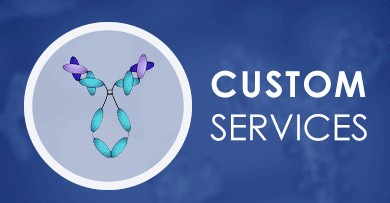+ Filter
 Loading...
Loading...

TFPI2
 Loading...
Loading...Anti-TFPI2 Products
-
- Derivation: Mouse
- Species Reactivity: Human
- Type: Mouse IgG1, κ
- Application: WB, IP, IF, IHC, ELISA
-
- Species Reactivity: Human
- Application: IHC-P
- Mouse Anti-TFPI2 Recombinant Antibody (clone CBL592) (NEUT-1998CQ)
-
- Species Reactivity: Human
- Type: Mouse IgG2b
- Application: IP, Neut
- AbPlus™ Anti-TFPI2 Magnetic Beads (VS-0724-YC763) (VS-0724-YC763)
-
- Target: TFPI2
- Target Species: Human
- Application: IP, Protein Purification
- Anti-TFPI2 Immunohistochemistry Kit (VS-0525-XY7199)
-
- Species Reactivity: Human
- Target: TFPI2
- Application: IHC
View More Products
Can't find the products you're looking for? Try to filter in the left sidebar.Filter By Tag
More Infomation
Our customer service representatives are available 24 hours a day, from Monday to Sunday. Contact Us
For Research Use Only. Not For Clinical Use.
Background
The protein encoded by this gene was identified as a regulator of the MAP kinase kinase kinase MAP3K7/TAK1, which is known to mediate various intracellular signaling pathways, such as those induced by TGF beta, interleukin 1, and WNT-1. This protein interacts and thus activates TAK1 kinase. It has been shown that the C-terminal portion of this protein is sufficient for binding and activation of TAK1, while a portion of the N-terminus acts as a dominant-negative inhibitor of TGF beta, suggesting that this protein may function as a mediator between TGF beta receptors and TAK1. This protein can also interact with and activate the mitogen-activated protein kinase 14 (MAPK14/p38alpha), and thus represents an alternative activation pathway, in addition to the MAPKK pathways, which contributes to the biological responses of MAPK14 to various stimuli. Alternatively spliced transcript variants encoding distinct isoforms have been reported. [provided by RefSeq, Jul 2008]

Predicted location
Intracellular, Secreted (different isoforms)
Single cell type specificity
Cell type enhanced (Syncytiotrophoblasts, Ductal cells, Glandular and luminal cells, Prostatic glandular cells)
Immune cell specificity
Not detected in immune cells
Cell line specificity
Cell line enhanced
Interaction
Finds in a complex with ABCB1, TFPI2 and PPP2R3C; leading to the dephosphorylation of ABCB1.
Molecular function
Protease inhibitor, Serine protease inhibitor
More Types Infomation



